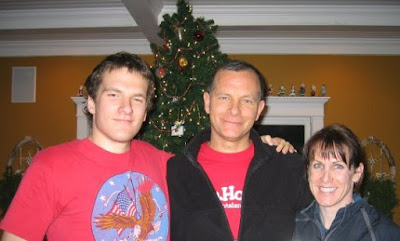I talked a little about WorldCat in last week's post, and, being a university librarian, I'm already very familiar with it. OCLC, the provider of WorldCat, even has a website on WorldCat for genealogy, with tutorials on using both the free online version and the subscription version accessed via FirstSearch, which is the interface I usually use.
However, for this exercise, I decided to use the free WorldCat. I thought I would see if I could find anything about the De Haven family in Pennsylvania, just in case I decide to pursue DAR membership through my Wolfe and De Haven ancestors.
I've learned enough about searching that I knew I couldn't just enter "De Haven" in the search box as that would pick up things BY De Havens as well as ABOUT them. Even doing an advanced search on subject: De Haven brought up 210 results. A lot of these have nothing to do with the De Haven family, but by clicking on one that did, I saw that I should limit the subject to De Haven family. That reduced it to 33 results, still too many for me to start with.
So I repeated an advanced search on subject: De Haven family and keyword: Pennsylvania. That brought up the following items:
The de Haven family (alias im den Hoffe or ten Haúven) of early Philadelphia County, Pennsylvania : through Anne (DeHaven) Wright by Helen Martha Wright (two versions of this); and
De Haven pioneers, 1680-1983 by Elton L Davis; Carolyn Spicer Carney.
For the first item, WorldCat actually produced better results than FirstSearch. Initially the latter only showed the title being available at one library, but that was because the initial results only showed one edition/format--it's actually available in 13. WorldCat showed the title available at 44 libraries in 11 editions or formats. One of those includes microform at a public library about 30 miles, so I could easily travel there if they do not loan it out on interlibrary loan.
However - even better - this book is available online through Heritage Quest Online. In Texas, many libraries have access to this subscription database through the TexShare program. Because the database will mark "hits" in the book of your search terms, I was able to quickly scan though it. There was some information about my De Haven ancestor, but most of it was about his brother.
The second item is available in print at the New York Public Library, but must be used in library. It's also available in microform from the State Library of Pennsylvania and (according to FirstSearch) the New Jersey State Library.
The third item is only available in WorldCat at the Iron Range Research Center, part of the Minnesota Discovery Center. After some digging, I found that this book is part of their non-circulating collection. The best I could probably hope for with these last two titles is a loan with in-library use.
For the first item, WorldCat actually produced better results than FirstSearch. Initially the latter only showed the title being available at one library, but that was because the initial results only showed one edition/format--it's actually available in 13. WorldCat showed the title available at 44 libraries in 11 editions or formats. One of those includes microform at a public library about 30 miles, so I could easily travel there if they do not loan it out on interlibrary loan.
However - even better - this book is available online through Heritage Quest Online. In Texas, many libraries have access to this subscription database through the TexShare program. Because the database will mark "hits" in the book of your search terms, I was able to quickly scan though it. There was some information about my De Haven ancestor, but most of it was about his brother.
The second item is available in print at the New York Public Library, but must be used in library. It's also available in microform from the State Library of Pennsylvania and (according to FirstSearch) the New Jersey State Library.
The third item is only available in WorldCat at the Iron Range Research Center, part of the Minnesota Discovery Center. After some digging, I found that this book is part of their non-circulating collection. The best I could probably hope for with these last two titles is a loan with in-library use.
[52 Weeks to Better Genealogy was developed by my friend Amy of We Tree and is hosted by Geneabloggers.com] © Amanda Pape - 2010










